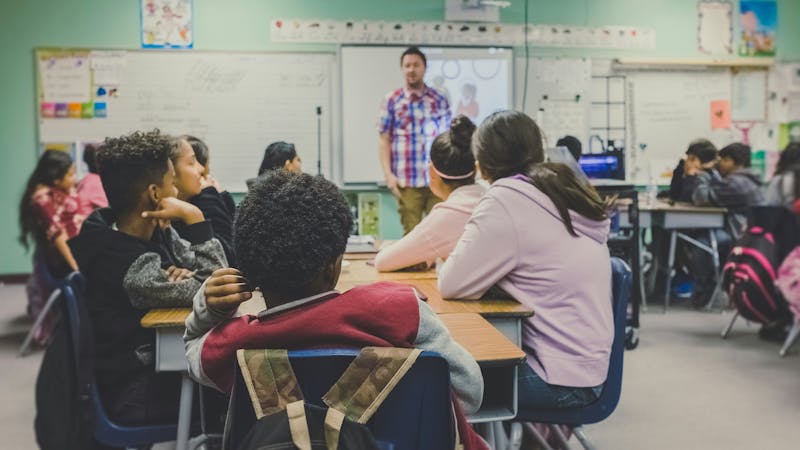School Segregation & Educational Inequality: What Do We Do About It?
Author: Casey Wise
Last update: 4/9/2024

School segregation and educational inequality persist as challenges within our education system, creating barriers to equal opportunities for students. Here, we will delve into the current issues, potential solutions, and information on initiatives, mentorships, and resources for addressing these disparities. Hopefully, we'll spark a dialogue on effective strategies to ensure every child has access to a quality education, regardless of their background.
What Is School Segregation?
School segregation refers to dividing students into separate schools or classrooms based on race, ethnicity, economic status, or other characteristics, leading to unequal educational experiences and outcomes.
This issue was born from historical policies, residential patterns, and school district decisions. Despite significant legal and societal efforts to desegregate schools following landmark rulings like Brown VS Board of Education, segregation endures in various forms.
School segregation often mirrors and exacerbates societal inequalities in society, such as the distribution of black and white children in the South of the United States. Understanding school segregation's roots and implications is crucial for addressing the educational inequities that continue to affect communities across the nation.
What Does Educational Inequality Look Like?
Educational inequality manifests in complex ways, impacting students from their early years to higher education. Perhaps where it is most notable is access to quality teachers, advanced coursework, and extracurricular activities. Students in under-resourced schools often face larger class sizes, outdated materials, and facilities in disrepair. A study conducted by Stanford University found that black and Hispanic students regularly underperformed compared to white children, with the causes being what we've just spoken about: teaching, resources, and facilities.
Beyond this, inequality appears in the distribution of academic outcomes, such as standardized test scores, graduation rates, and college enrollment numbers, often correlating with socioeconomic status, race, and geography. This inequality extends to disciplinary practices, where minority students may face harsher penalties; Princeton University showed this in one of its many studies into School segregation and educational inequality.
How To Stop School Segregation & Educational Inequality
Stopping school segregation and educational inequality demands a multifaceted approach, engaging policymakers, educators, communities, and families. It starts with addressing the underlying issues of better schooling in poorer areas. Equitable funding models can ensure all schools receive the best resources, regardless of the wealth of their surrounding neighborhoods.
Policies should also prioritize access to high-quality preschool education for all children, laying a strong foundation for lifelong learning. Starting at a young age in an environment that has your back rather than dragging you down is paramount to success.
Curriculum reforms should focus on inclusivity and the representation of diverse cultures and histories, while recruitment efforts should aim to diversify teaching staff, reflecting the student population's diversity.
While it is generally understood that these things are better said than done, it seems that the existence of school segregation and educational inequality in modern times is evidence that we aren't progressing quickly enough. So, what initiatives, mentorships, and resources are available today that help promote desegregation and educational equality? Let's take a look.
Initiatives Fighting Against Educational Inequality
There are a bunch of initiatives out there that aid in the progression of educational equality and school segregation. Let's look at a few.
UNESCO's Campaign Against Discrimination in Education
Adopted over 60 years ago, UNESCO's Campaign Against Discrimination in Education serves as a key global tool to safeguard the right to education and promote equal learning opportunities. This initiative calls on countries to ratify the convention to strengthen policy and legal frameworks, ensuring education for all and countering discrimination.
Giving Compass' Seven Solutions for Education Inequality
This initiative outlines clear strategies aimed at reducing education inequality, particularly affecting low-income minority students. Solutions proposed include reevaluating funding sources, halting the expansion of charter and private schools that aren't accessible to all, and supporting teachers with better pay and benefits.
Oxfam's Advocacy for Public Education to Fight Inequality
The charity Oxfam emphasizes the transformative power of good-quality public education in addressing economic and gender inequalities. By advocating for education that is free, universal, well-funded, supported by qualified teachers, and overseen by accountable public institutions, Oxfam believes education can serve as 'the great equalizer.'
Mentorships For The Educational Disadvantaged
Let's turn to mentorships and look at a few that are doing what they can to reduce educational inequality and school segregation.
The National Mentoring Resource Center (NMRC)
The NMRC provides a comprehensive overview of different mentoring programs, such as the Achievement Mentoring Program, E-Mentoring Program for Secondary Students with Learning Disabilities, and the School-Based Mentoring Program for At-Risk Middle School Youth. These programs target a variety of needs, but all emphasize the importance of correct academic teaching.
National Mentoring Resource Center
The Puente Project
Initially started in 1981 at Chabot Community College in Hayward, California, the Puente Project has expanded significantly and now operates in middle schools, high schools, and community colleges. It aims to increase the number of educationally disadvantaged students enrolling in four-year colleges and universities, earning degrees, and returning to their communities as leaders and mentors.
The Educational Opportunity Program (EOP)
Offered across various University of California campuses, EOP assists first-generation college students, those from low-income backgrounds, and educationally disadvantaged individuals through mentorship, academic programs, and financial assistance. It aims to guide students through to graduation and is available to California residents and American Indians from any state.
School District Strategies in the US
The Urban Institute outlines several strategies for school districts to dismantle racial segregation in public schools. This resource is an incredible jumping-off point for anyone who wants to understand more about school segregation and educational inequality. Urban Institute's goal is to shine a light on efforts to equalize the quality of education across public schools.
Policy Recommendations for Educational Equity
A policy brief from the University of California, Berkeley, emphasizes the need for equity-oriented and race-sensitive policies to address educational inequities. It points out that current policies often fail to consider socioeconomic and societal factors affecting academic achievement. Their article, Responding to Educational Inequality, is an essential read.
Othering & Belonging Institute
The NMAAHC’s Historical Context of Segregated Education
The National Museum of African American History and Culture provides a rich historical overview of the struggle against segregated education in the United States, from the post-Civil War amendments to the landmark Brown v. Board of Education decision. This resource underscores the importance of ongoing efforts to advance social justice and racial equity in education.


